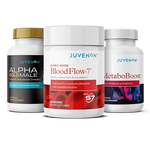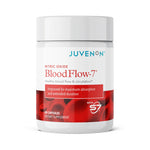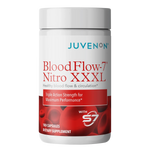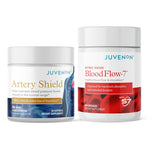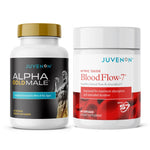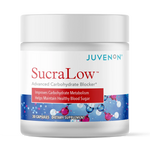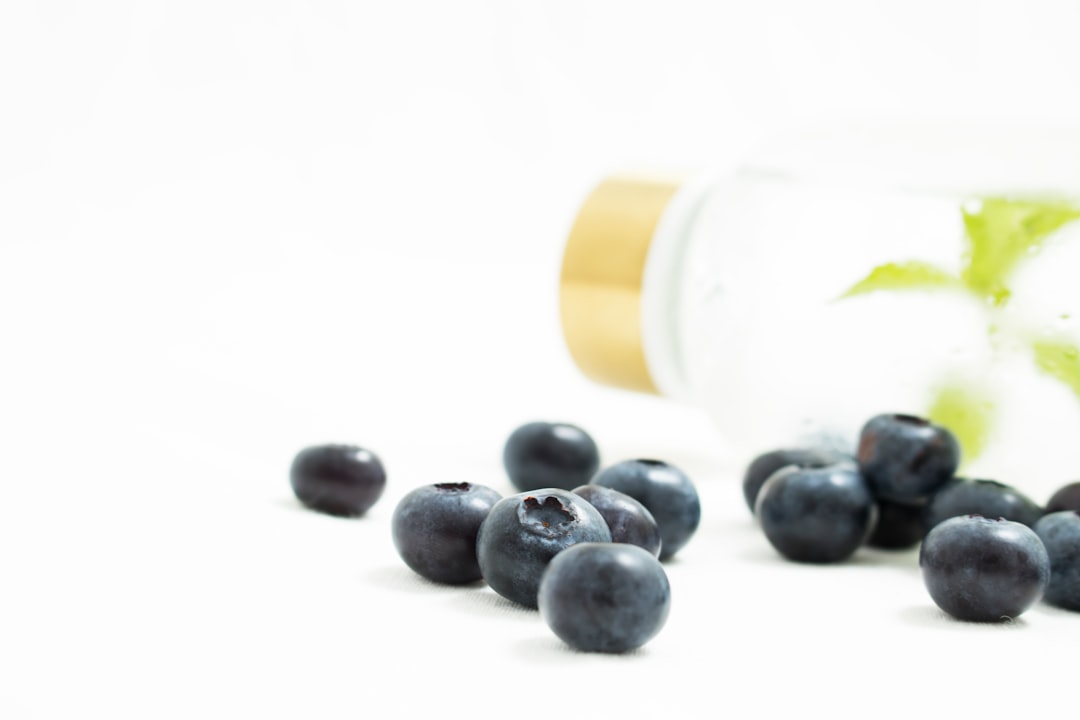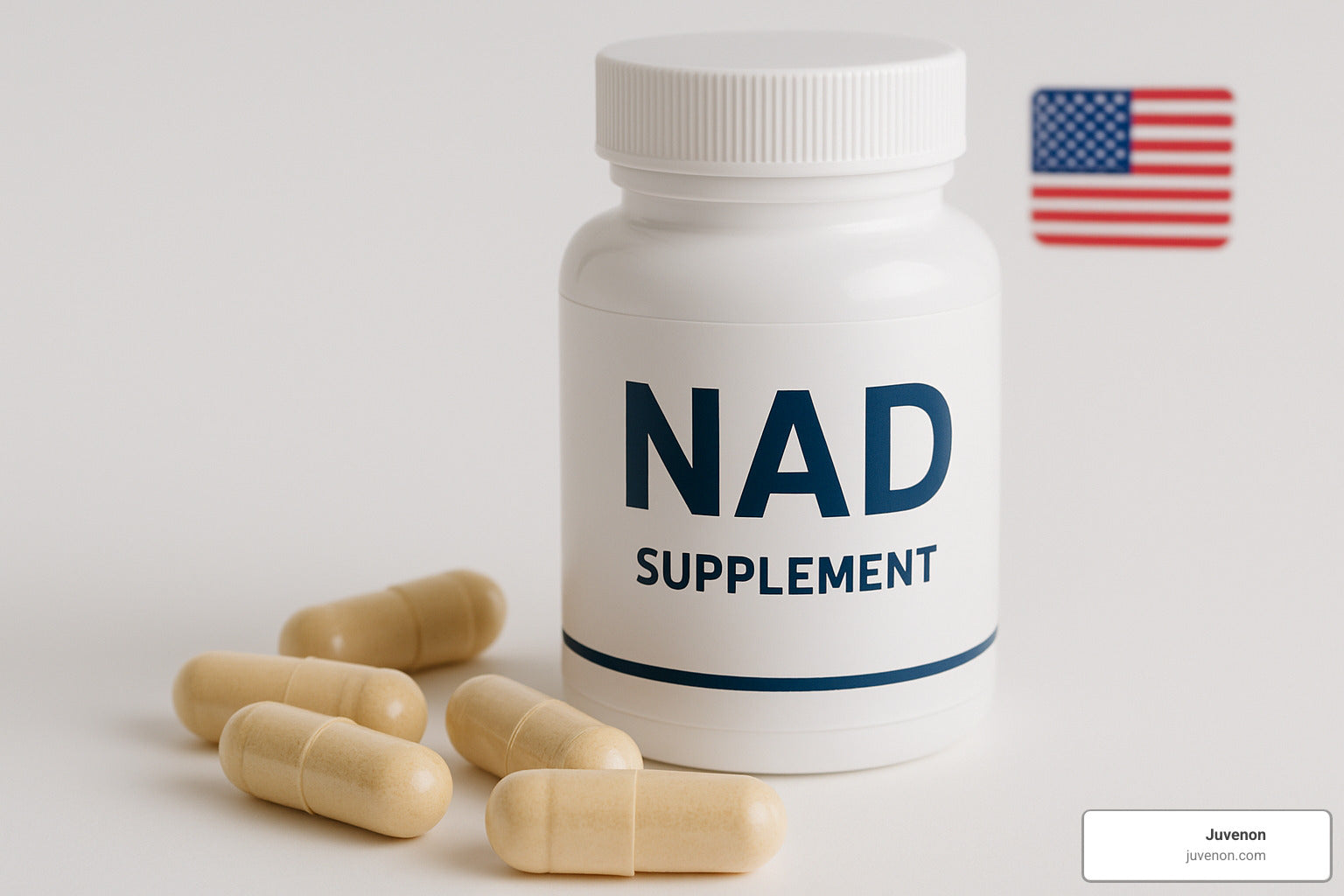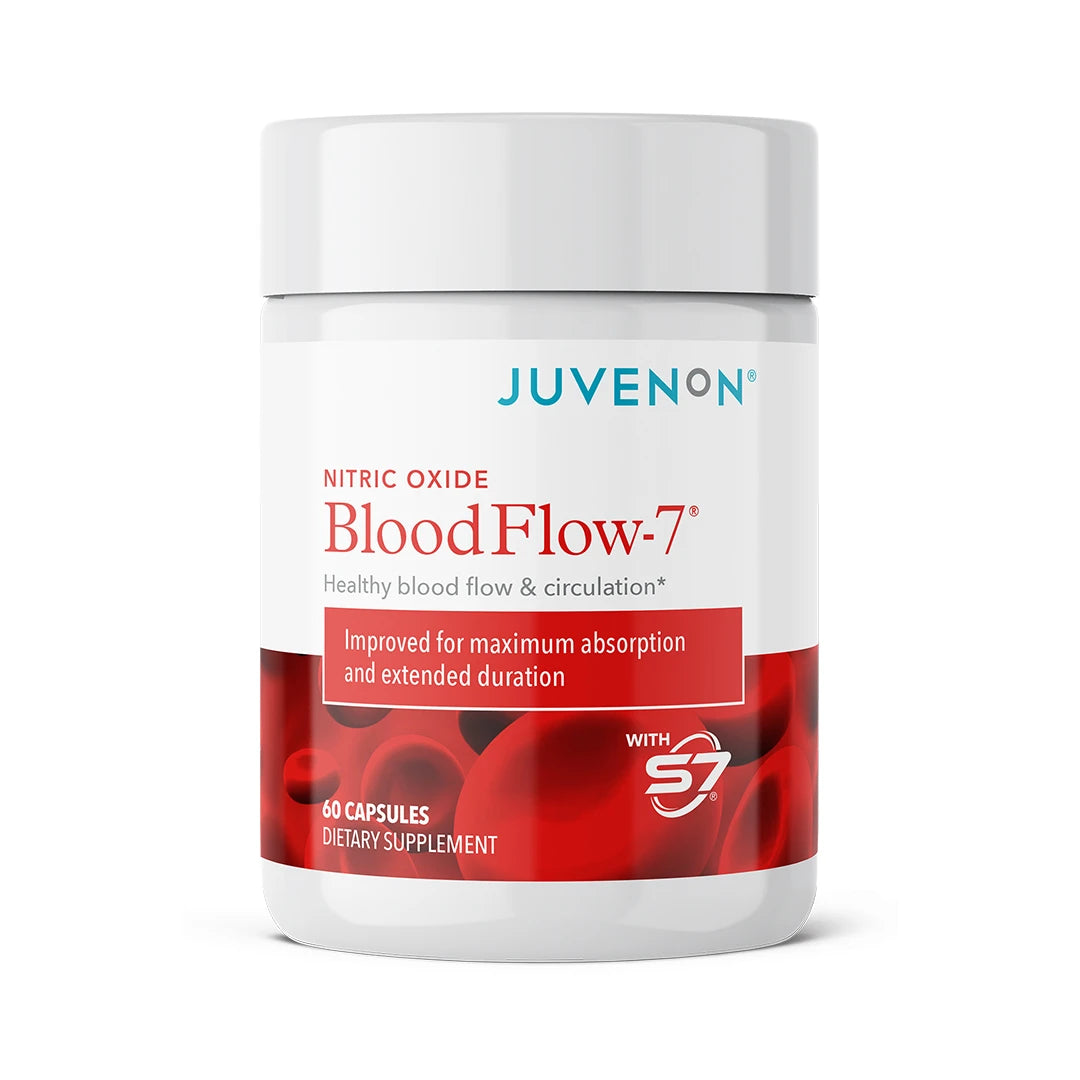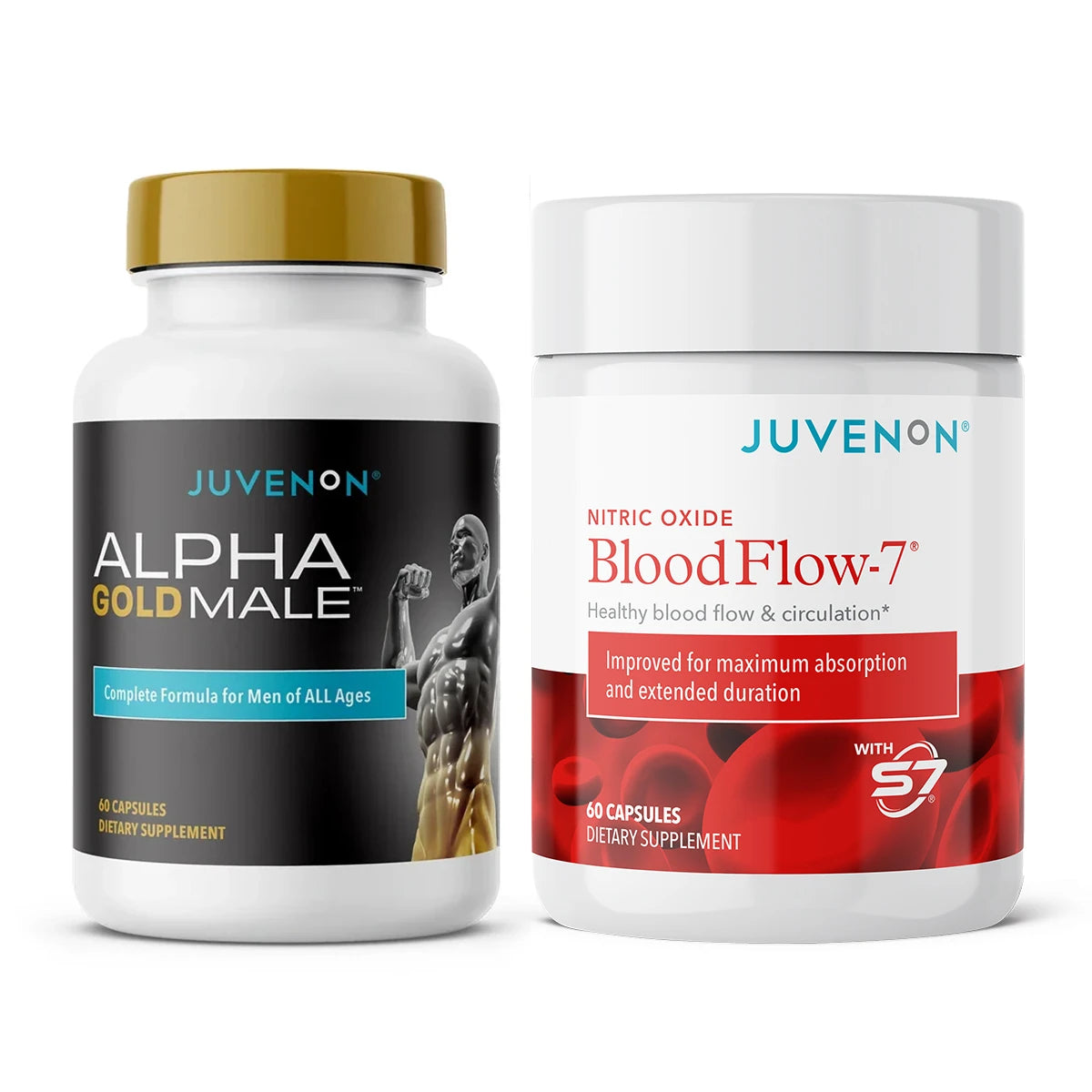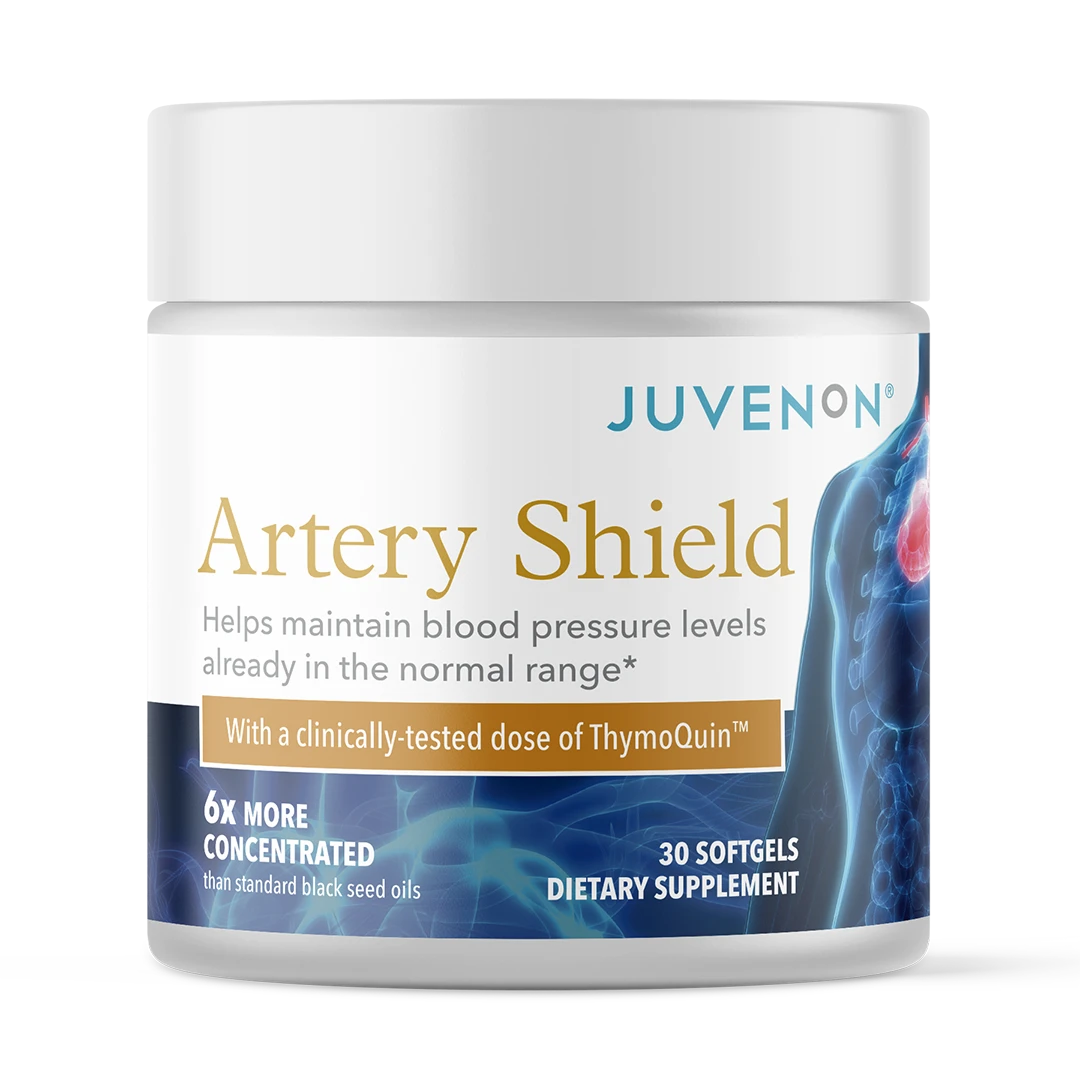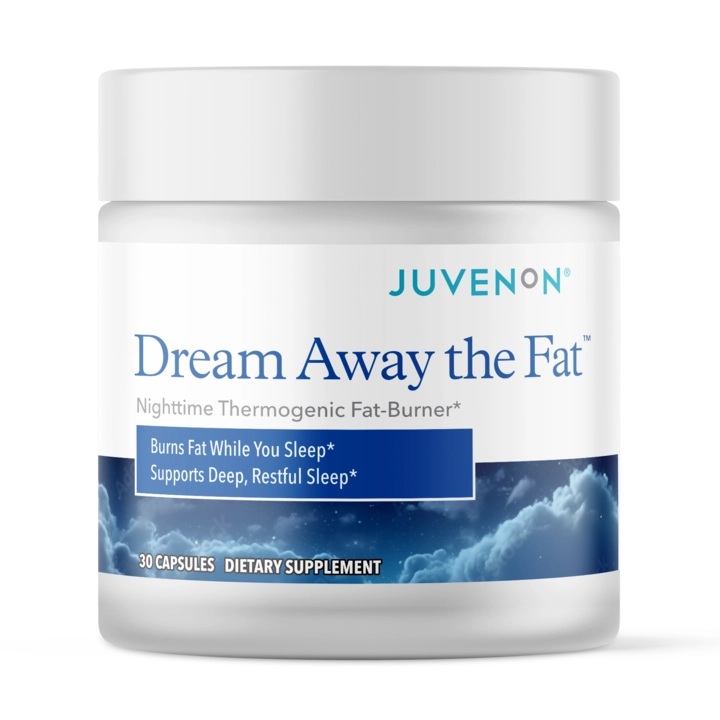Why NAD+ Is Your Brain's Secret Weapon for Cognitive Longevity
NAD for brain health is becoming a game-changer in the fight against cognitive decline and brain aging. This vital molecule powers everything from memory formation to neuroprotection, yet most people have never heard of it.
Quick Answer: How NAD+ Supports Brain Health • Energy Production: Powers brain cells and supports mitochondrial function • DNA Repair: Activates enzymes that fix damaged neurons • Neuroprotection: Reduces inflammation and oxidative stress in the brain • Memory Support: Improves synaptic plasticity and neurotransmission • Anti-Aging: Slows cellular aging processes in brain tissue
Here's what makes this so important: NAD+ levels in your brain drop by nearly 40% as you age. Research shows this decline directly impacts cognitive function, memory, and your brain's ability to protect itself from damage.
The good news? Science is revealing effective ways to boost NAD+ levels and support long-term brain health. From targeted supplements to lifestyle changes, there are proven strategies that can help maintain cognitive vitality as you age.
I'm Michelle M. Henson, and as Head of Copywriting at healthy aging supplement company Juvenon, I've spent years researching the science behind NAD for brain health and translating complex research into practical solutions. My goal is to help you understand how this remarkable molecule can support your cognitive longevity journey.

What Is NAD+ and Why Your Brain Depends on It
Let me introduce you to one of your body's most important molecules—one that your brain literally can't live without. NAD+ (nicotinamide adenine dinucleotide) might sound like a mouthful, but think of it as your brain's main power source and repair toolkit all rolled into one.
Your brain is incredibly demanding when it comes to energy. Despite making up only 2% of your body weight, it gobbles up about 20% of all the energy you produce. That's where NAD+ comes in as the star of the show.
As part of what scientists call a redox pair (NAD+/NADH), this molecule works like a shuttle service, moving electrons around during energy production. It helps convert the food you eat into ATP—the actual fuel your neurons use to fire and communicate with each other. Without enough NAD+, your brain cells simply can't keep up with the energy demands of thinking, learning, and remembering.
But here's where it gets really interesting. NAD for brain health goes way beyond just making energy. This remarkable molecule serves as the raw material for several crucial enzyme families that keep your brain running smoothly.
Sirtuins use NAD+ to regulate which genes get turned on or off, helping your brain cells handle stress and stay healthy longer. PARPs consume NAD+ while fixing damaged DNA in your neurons—like having a repair crew that works around the clock. CD38 and CD157 use NAD+ for calcium signaling, which is essential for how brain cells communicate. And SARM1 plays a role in what happens when neurons get damaged.
The fascinating thing is how all these processes work together, with NAD+ sitting at the center of it all, supporting everything from basic neurotransmission to complex memory formation.

How NAD+ Powers Synapses and Memory
When you're trying to remember where you put your keys or learn a new skill, NAD+ is working behind the scenes to make it all possible. This is where NAD for brain health really shines—in the intricate dance of memory formation and cognitive function.
Your brain cells need massive amounts of energy to communicate effectively. NAD+ drives ATP production in your mitochondria, ensuring your neurons have enough power to send signals across synapses. Without adequate NAD+, it's like trying to run a high-performance computer on a dying battery—things just don't work as they should.
But NAD+ does something even more remarkable. It activates sirtuins, particularly SIRT1, which acts like a master switch for brain health. When SIRT1 gets activated, it promotes the production of BDNF (brain-derived neurotrophic factor). Scientists often call BDNF "miracle grow for the brain" because it helps neurons form new connections and strengthens existing ones.
This process of building and strengthening neural connections—called neuroplasticity—is absolutely essential for learning and memory. NAD+ also influences PGC-1α, which acts like a quality control manager for your mitochondria, making sure your brain cells have the energy they need for complex thinking tasks.
There's even emerging research on how NAD+ affects miR-134 and other regulatory molecules involved in epigenetic regulation—essentially how your brain adapts at the genetic level to new experiences and challenges.
Rapid NAD+ Turnover: The Hidden Challenge
Here's something that might surprise you: your brain burns through its entire NAD+ supply multiple times every single day. This rapid turnover creates a constant challenge that most people don't realize exists.
Several enzymes in your brain are like hungry consumers, constantly using up NAD+ for their important work. PARP1 becomes especially active when your DNA gets damaged, rapidly consuming NAD+ as it works to fix genetic problems. While this repair work is crucial, excessive PARP1 activity can leave your neurons running on empty.
CD38 is another major NAD+ consumer that becomes more active as you age and when inflammation increases. Think of it as a drain that gets bigger over time, making it harder for your brain to maintain adequate NAD+ levels. Studies show that CD38 levels can skyrocket in aging brains, contributing significantly to age-related cognitive decline.
SARM1 adds another layer of complexity. When neurons get injured, this enzyme activates and consumes large amounts of NAD+ in a process that can lead to axon degeneration if not properly controlled. It's like an emergency response system that sometimes causes more damage than it prevents.
The various NADases (enzymes that break down NAD+) work constantly in the background, creating a situation where your brain needs robust systems for regenerating this crucial molecule. This is why understanding NAD+ metabolism has become such an important area of research for brain health and longevity.
NAD for Brain Health Across the Lifespan
Here's something that might shock you: your brain starts losing NAD for brain health capacity much earlier than you'd expect. We're not talking about your 70s or 80s—this decline begins in your 20s and 30s, picking up speed as the decades pass.

Think of your brain's NAD+ like a bank account that starts getting drained faster than you can make deposits. By middle age, many people have lost nearly half of their brain's NAD+ capacity. This creates what scientists call "pseudohypoxia"—your brain cells start acting like they're suffocating, even when there's plenty of oxygen around.
This isn't just about feeling a little foggy after lunch. NAD+ decline triggers a cascade of changes that affect how your brain ages. Your mitochondria start struggling to produce energy efficiently. Oxidative stress increases, damaging delicate brain tissue. Your neurons lose their ability to repair DNA damage effectively. Inflammation becomes chronic, and your brain's remarkable ability to form new connections—called neuroplasticity—begins to fade.
The result? Your brain cells start showing signs of accelerated aging, setting the stage for the cognitive changes many people assume are just part of getting older.
Age-Related NAD+ Decline: Numbers That Matter
Let's talk specifics, because the numbers are pretty eye-opening. Research shows that the hippocampus—your brain's memory headquarters—loses nearly 40% of its NAD+ levels during middle age compared to youth. That's not a gentle slope downward; it's more like falling off a cliff.
Scientists use advanced imaging techniques called 31P-MRS (magnetic resonance spectroscopy) to peek inside living brains and measure these changes. What they've found confirms what animal studies suggested: human brains experience dramatic reductions in total NAD+ content as we age.
Here's where it gets really concerning. Remember CD38, that enzyme we mentioned earlier that breaks down NAD+? Its activity ramps up significantly with age, creating a perfect storm. Not only do aging brains produce less NAD+, but they also destroy it faster than ever.
Meanwhile, SIRT3—a crucial protein that depends on NAD+ to keep your mitochondria healthy—starts losing steam. This creates an energy crisis in your brain cells right when they need all the help they can get.
How NAD for Brain Health Impacts Everyday Cognition
These molecular changes aren't just happening in a laboratory somewhere—they're affecting your daily life in ways you might not even realize. That moment when you walk into a room and completely forget why you went there? The increasing difficulty remembering names of people you've met before? The way complex tasks seem to take more mental effort than they used to?
Memory lapses become more frequent as your hippocampus struggles with depleted NAD+ levels. Your brain's processing speed slows down when neurons can't generate enough energy for rapid-fire communication. Executive function—your ability to plan, make decisions, and juggle multiple tasks—starts feeling like you're operating with less horsepower.
Even your mood regulation can take a hit. NAD+ influences how your brain produces neurotransmitters and responds to stress. When levels drop, emotional resilience often follows suit.
The silver lining? Understanding the role of NAD for brain health means we're not helpless against these changes. While aging is inevitable, the dramatic cognitive decline many people experience may not be. By supporting your brain's NAD+ systems, you might be able to maintain sharper thinking and better memory for decades longer than you thought possible.
Biological Pathways: From Tryptophan to Synapses
Your brain has three main routes for producing NAD+, and understanding these pathways helps explain why different supplementation strategies may work better for different people.

Think of your brain as having three different factories, each one capable of making the same essential product—NAD+. Unlike other organs that might rely heavily on just one factory, your brain keeps all three running at different speeds depending on what raw materials are available and what your neurons need most.
The complexity of NAD for brain health becomes clearer when you realize that each pathway serves different purposes and responds to different triggers. Some work better when you're young, others become more important as you age, and some kick into high gear during times of stress or illness.
The Three Routes to Build NAD+ in Neurons
The de novo pathway starts with something you probably recognize—tryptophan. Yes, that's the same amino acid in turkey that gets blamed for post-Thanksgiving naps. But in your brain, tryptophan takes a fascinating journey through what scientists call the kynurenine pathway to eventually become NAD+.
This pathway is particularly active during brain development and can be heavily influenced by inflammation and stress. When your immune system is fighting off an infection, for example, it can redirect tryptophan away from NAD+ production and toward immune responses. This might explain why you feel mentally foggy when you're sick.
The Preiss-Handler pathway uses nicotinic acid (also called niacin) as its starting material. This route is remarkably efficient at converting niacin into NAD+, which is why niacin was one of the first NAD+ precursors studied for brain health. The downside? That infamous "niacin flush"—the warm, tingling, sometimes red-faced sensation that can happen with higher doses.
The salvage pathway is perhaps the most important for NAD for brain health as we age. This clever system recycles nicotinamide and processes newer NAD+ precursors like nicotinamide riboside and nicotinamide mononucleotide. Think of it as your brain's recycling center, making sure nothing goes to waste.
Recent research has uncovered something exciting about how these precursors actually get into brain cells. Scientists finded a transporter called Slc12a8 that can shuttle NMN across cell membranes. This finding suggests that different NAD+ precursors might have varying abilities to boost brain NAD+ levels, depending on which transporters they can use.

The final steps of NAD+ production involve a family of enzymes with the tongue-twisting names NMNAT1, NMNAT2, and NMNAT3. Each works in a different part of your brain cells—the nucleus, cytoplasm, and mitochondria respectively. This ensures NAD+ is available exactly where your neurons need it most, whether that's for DNA repair in the nucleus or energy production in the mitochondria.
What's particularly interesting is how these pathways can work together. Your brain doesn't just pick one route and stick with it. Instead, it dynamically shifts between pathways based on what's available and what's needed at any given moment.
CD38 and Other NAD+ Consumers in the Brain
While your brain works hard to produce NAD+, several enzymes are constantly consuming it. Understanding these "NAD+ drains" helps explain why NAD for brain health strategies need to be both consistent and adequate—it's not enough to just make more NAD+ if something else is rapidly breaking it down.
CD38 acts like a hungry monster that devours NAD+ at an alarming rate. This enzyme doesn't just break down NAD+; it also produces calcium-signaling molecules that can trigger inflammation when things get out of control. Here's the frustrating part: CD38 levels increase dramatically as we age and in neurodegenerative diseases, creating a vicious cycle where aging brains both need more NAD+ and destroy it faster.
Studies show that blocking CD38 can significantly improve NAD+ levels in aging animals, which has sparked interest in finding natural ways to moderate this enzyme's activity.
PARP1 activity represents another major NAD+ drain, especially when your brain cells are dealing with DNA damage. Think of PARP1 as an emergency repair crew that rushes to fix genetic damage. The good news is that it's incredibly effective at its job. The challenging news is that it consumes massive amounts of NAD+ in the process.
During times of high oxidative stress or inflammation, PARP1 can become hyperactive, rapidly depleting cellular NAD+ stores. This leaves neurons in an energy crisis just when they need energy most for repairs.
SARM1 activation during nerve injury creates another significant NAD+ consumption event. When axons—the long projections that connect neurons—become damaged, SARM1 kicks into action. While this process can help clean up damaged nerve fibers, excessive SARM1 activity can contribute to the axon degeneration seen in various neurological conditions.
The balance between NAD+ production and consumption ultimately determines your brain's NAD+ status. This is why effective strategies for NAD for brain health often focus on both sides of the equation—boosting production through targeted precursors while supporting lifestyle choices that help moderate excessive consumption.
Understanding these pathways helps explain why some people might respond better to certain NAD+ precursors than others, and why a comprehensive approach to brain health involves more than just supplementation alone.
Boosting NAD+: Evidence-Based Strategies for Neuroprotection
The exciting news about NAD for brain health is that we're no longer just understanding the problem—we're finding real solutions. Recent research has uncovered multiple effective ways to boost NAD+ levels and protect your brain from age-related decline.
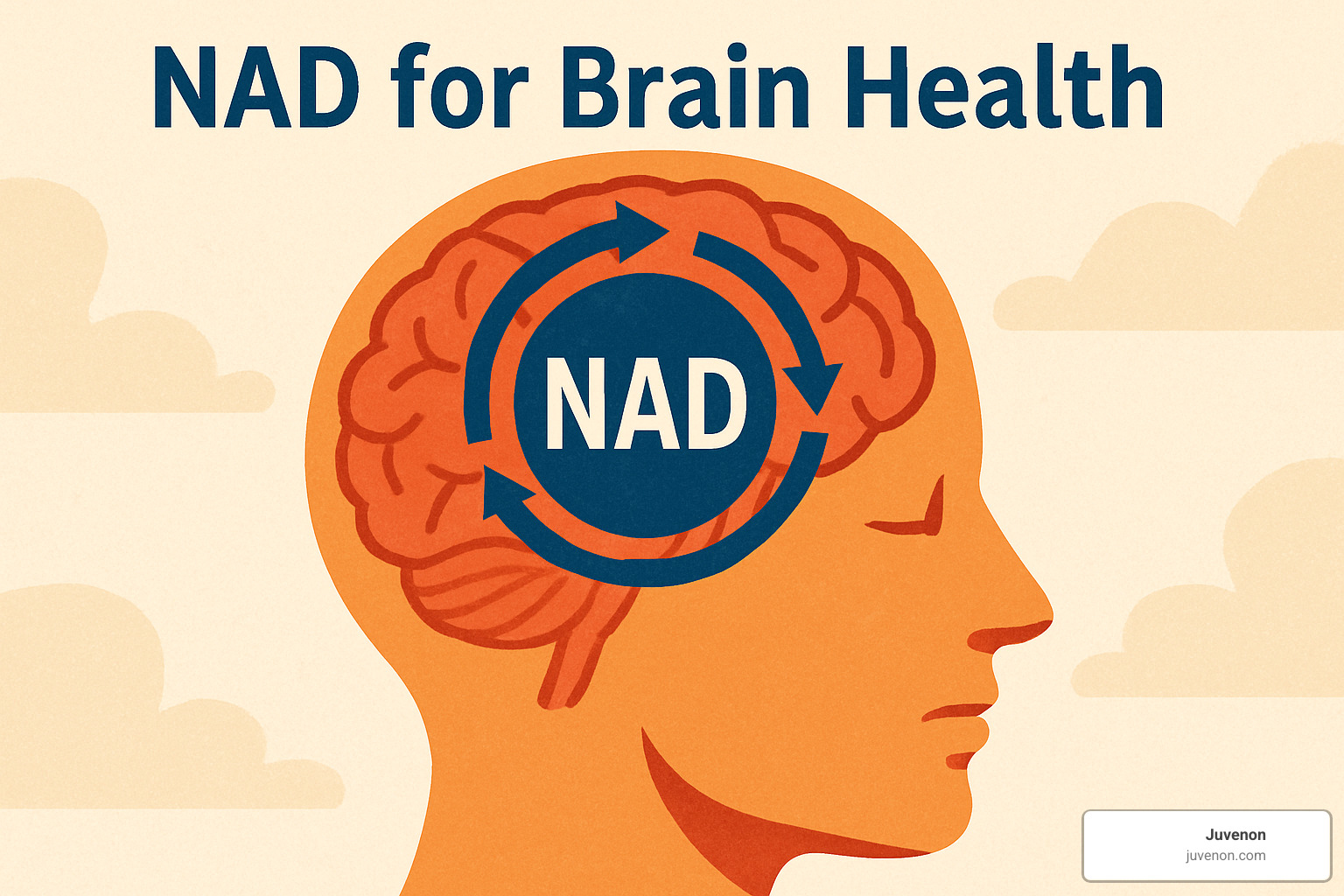
What makes this field so promising is that different strategies work through different mechanisms. Some approaches focus on ramping up NAD+ production, while others work to slow down its consumption. The most effective strategies often combine multiple approaches for maximum benefit.
Think of it like filling a leaky bucket—you want to both increase the water flow and patch the holes. That's exactly what comprehensive NAD for brain health strategies aim to do.
Animal & Human Studies on NAD+ for Brain Health
The scientific evidence supporting NAD+ interventions for brain health is growing rapidly and the results are genuinely exciting. When researchers gave aged mice nicotinamide riboside (NR) at 400 mg per kilogram of body weight daily for six weeks, something remarkable happened. The animals showed increased neural stem cell growth and performed significantly better on memory tests.
Similar studies using NMN have produced equally impressive results. Aged mice receiving 300 mg/kg daily of NMN for an entire year showed improved cognitive function and increased activity in neural stem cells. These animals could steer mazes better and showed stronger markers of brain plasticity—essentially, their aging brains started acting younger.
But here's where it gets really interesting: studies in Alzheimer's disease models show that NAD+ boosting can reduce amyloid-beta buildup, decrease brain inflammation, and restore mitochondrial function in affected brain regions. One particularly compelling study found that NAD+ treatment completely reversed cognitive deficits in rats with vascular dementia within just eight weeks.
The mechanism involves protecting the brain's immune cells (microglia) and reducing inflammatory signaling through the Sirt1/PGC-1α pathway. It's like giving your brain's cleanup crew the energy they need to do their job properly.
Human studies are still catching up, but early results are promising. While we don't yet have large-scale trials specifically measuring cognitive improvements, multiple studies confirm that NAD+ precursors safely raise blood NAD+ levels in people. The Scientific research on NAD+ in brain aging provides compelling evidence for the therapeutic potential of these interventions.
Oral vs. IV—What Raises Brain NAD Faster?
This question comes up constantly, and honestly, it's one of the most practical concerns people have about NAD for brain health strategies. The answer isn't as straightforward as you might hope, but I can help you understand the trade-offs.
Oral NAD+ precursors like NR and NMN offer convenience and proven safety. You can take them at home, they're well-researched, and studies show they definitely raise blood NAD+ levels. The big question is how effectively they cross into your brain. Recent findies of specific transporters like Slc12a8 suggest that some precursors may penetrate brain tissue better than others, but we're still learning exactly how this works in humans.
IV NAD+ therapy achieves complete bioavailability since it bypasses your digestive system entirely. Supporters argue this leads to faster, more dramatic increases in cellular NAD+ levels. However, the evidence that IV therapy is superior for brain benefits specifically is still limited. Plus, IV therapy requires clinical visits and is significantly more expensive.
Sublingual NADH sits somewhere in the middle ground. It potentially offers better absorption than regular oral supplements while being much more convenient than IV treatments.
Here's the honest truth: we need more human studies that actually measure brain NAD+ levels to definitively say which approach works best for cognitive benefits. What we do know is that consistency matters more than the delivery method for most people.
Risks, Side Effects, and Contraindications
While NAD for brain health interventions are generally very safe, it's important to understand what you might experience and when to be cautious.
Niacin flushing is probably the most well-known side effect. If you've ever taken high-dose niacin, you know that warm, tingly sensation that can make your skin feel like it's glowing. Some people also experience temporary drops in blood pressure. The good news is that these effects usually diminish as your body adjusts.
NAD+ precursors like NR and NMN are much gentler. Most people tolerate them well, though some experience mild nausea or digestive upset when first starting. Taking them with food often helps minimize any stomach discomfort.
Methyl donor depletion is a more technical concern that's worth understanding. The salvage pathway that recycles NAD+ uses up methyl groups in the process. For long-term users, supporting methylation with B-vitamins might be a smart precaution.
Drug interactions are possible, especially with medications that affect energy metabolism or blood pressure. This is why it's crucial to talk with your healthcare provider before starting any new supplement regimen.
Pregnancy and breastfeeding require extra caution. The European Food Safety Authority recommends lower doses (up to 230 mg daily) for pregnant or nursing women, though many practitioners suggest avoiding supplementation entirely during these periods unless specifically recommended by a doctor.
The bottom line? Start slowly, pay attention to how your body responds, and work with a knowledgeable healthcare provider to find the approach that works best for your individual situation.
Frequently Asked Questions about NAD+ and Cognitive Longevity
Does boosting NAD+ really cross the blood-brain barrier?
This is probably the most important question when it comes to NAD for brain health. After all, what good would NAD+ supplements do if they can't actually reach your brain?
Here's the thing: NAD+ itself is a large molecule that has trouble crossing the blood-brain barrier. Think of this barrier as your brain's security system—it's very selective about what it lets in. Direct NAD+ just doesn't make the cut.
But here's where it gets interesting. NAD+ precursors like NR and NMN are smaller and can slip past this barrier more easily. Scientists recently finded a specific transporter called Slc12a8 that actually helps shuttle NMN into brain cells. It's like having a VIP pass to get into an exclusive club.
Different precursors seem to have different "keys" to open up brain access. This might explain why some people respond better to certain forms of NAD+ supplementation than others. Research in laboratory animals confirms that when you give oral NAD+ precursors, brain NAD+ levels do increase—though some compounds work faster and more efficiently than others.
The bottom line? Yes, properly formulated NAD+ precursors can reach your brain, but the specific compound and formulation matter more than you might think.
How long until I feel cognitive benefits?
I get this question a lot, and I understand why people want to know. When you're investing in your brain health, you naturally want to see results.
Based on the research we have, most people who experience cognitive improvements from NAD for brain health strategies notice changes somewhere between 6 and 12 weeks of consistent use. But here's the honest truth: it varies quite a bit from person to person.
Some lucky folks report feeling sharper and more energetic within the first few weeks. Others need to be more patient—the really substantial cognitive improvements typically show up after a couple months of steady supplementation.
Several factors influence your timeline. If you're starting with very low NAD+ levels, you might notice changes sooner. Your age plays a role too, as does your overall health status and how well your body processes these compounds. The specific dosage and type of NAD+ precursor you're using also makes a difference.
Think of it like getting back into shape after being sedentary. Some people see quick improvements in energy and stamina, while the deeper changes in strength and endurance take more time to develop.
Can I combine NAD+ precursors with other brain-healthy habits?
Absolutely! In fact, this is exactly what I'd recommend. NAD for brain health works best as part of a comprehensive approach to cognitive wellness, not as a magic bullet on its own.
Exercise is probably your best friend here. Physical activity naturally boosts your body's own NAD+ production while also promoting brain health through completely different pathways. It's like getting a two-for-one deal. Studies show that people who exercise regularly get better results from NAD+ supplementation than those who don't.
What you eat matters too. A Mediterranean-style diet provides many of the building blocks your brain needs to make NAD+, including tryptophan and B-vitamins. The antioxidants in colorful fruits and vegetables also help protect your existing NAD+ from being depleted by oxidative stress.
Don't underestimate good sleep. Your NAD+ levels naturally rise and fall throughout the day in sync with your circadian rhythms. Poor sleep disrupts these cycles and can undermine even the best supplementation strategy.
Managing stress is crucial because chronic stress activates enzymes that rapidly consume NAD+. It's like trying to fill a bucket with holes in it—you need to patch the holes (manage stress) while adding water (supplementing NAD+).
At Juvenon, we've consistently seen that customers who combine our scientifically-backed supplements with these lifestyle approaches get the most impressive results. It's not just about taking a pill—it's about supporting your brain's natural ability to thrive.
Conclusion
The journey through NAD for brain health research reveals something truly remarkable: we're not powerless against cognitive decline. While it's true that NAD+ levels drop dramatically as we age—sometimes by 40% or more—science is showing us practical ways to fight back.
Think about what we've finded together. NAD+ isn't just some obscure molecule buried in textbooks. It's the fuel that powers your memory, the guardian that protects your neurons, and the key that open ups your brain's ability to stay sharp and adaptable throughout life.
The research paints a clear picture. When your brain has adequate NAD+, mitochondria hum along efficiently, DNA repair systems work overtime to fix damage, and those crucial longevity pathways stay active. When NAD+ levels plummet, everything starts to slow down—memory gets fuzzy, focus becomes harder, and that mental sharpness you once took for granted begins to fade.

But here's the encouraging part: you have options. Whether it's through targeted supplementation with compounds like NR or NMN, lifestyle changes that naturally boost NAD+ production, or combining multiple approaches for maximum benefit, there are evidence-based strategies that can make a real difference.
The science is still evolving, and that's exciting. Clinical trials are underway exploring everything from preventing Alzheimer's to enhancing cognitive performance in healthy adults. Each new study brings us closer to understanding exactly how to optimize NAD for brain health for different people at different stages of life.
At Juvenon, we've built our reputation on translating this cutting-edge research into supplements you can trust. Our scientifically-backed formulas target the cellular processes that matter most for healthy aging, including cognitive function. And because we believe in what we create, every purchase comes with our 60-day money-back guarantee.
The future looks bright for anyone committed to protecting their cognitive health. The key is starting now, while your brain still has the resilience to respond. Every day you support your NAD+ pathways is an investment in decades of continued mental vitality.
Your brain has carried you this far—now it's time to carry it forward. By understanding and supporting NAD+ biology, you're not just hoping for the best. You're taking science-backed action to protect one of your most precious assets: your mind.

